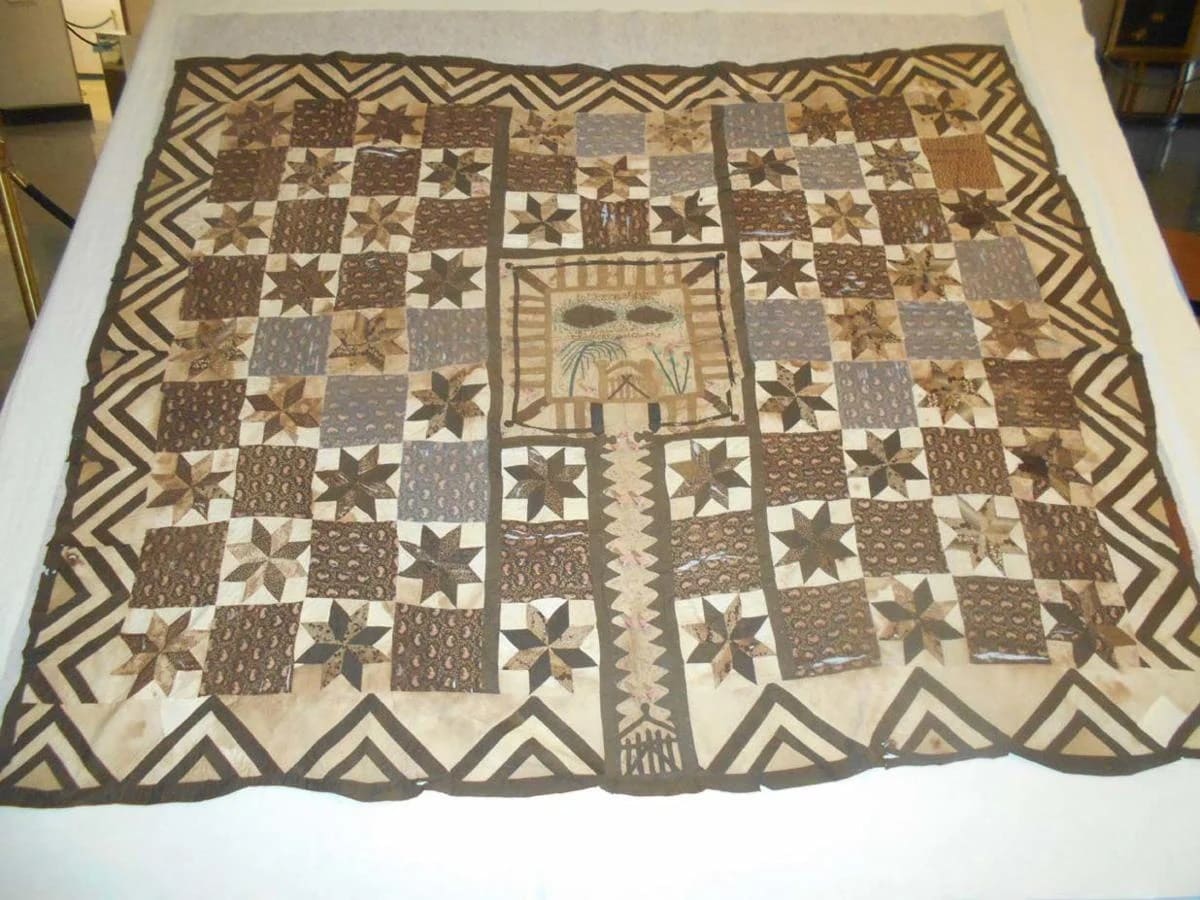

Articles
What Is The Oldest Known Quilt
Modified: January 5, 2024
Looking for articles on the oldest known quilt? Discover the fascinating history behind quilting and explore ancient quilts in this informative read.
(Many of the links in this article redirect to a specific reviewed product. Your purchase of these products through affiliate links helps to generate commission for Storables.com, at no extra cost. Learn more)
Introduction
Welcome to the fascinating world of quilting, a craft that has been treasured by cultures around the globe for centuries. Quilts are known for their beauty, functionality, and rich historical significance. They showcase the artistry and ingenuity of generations past, while also providing warmth and comfort.
The art of quilting has deep roots that can be traced back thousands of years. From ancient civilizations to modern times, quilts have evolved and adapted, reflecting the cultural and artistic influences of each era. In this article, we will explore the origins of quilting and unravel the mystery of the oldest known quilt.
Quilting, which involves stitching together layers of fabric to create a padded textile, is believed to have originated in ancient times. It is difficult to pinpoint the exact origin, as early quilts were typically made from perishable materials that may not have survived to the present day. However, evidence of quilting has been found in various ancient civilizations, providing valuable insight into the early days of this craft.
Egyptian and Coptic civilizations were among the earliest to engage in quilting. The Egyptians used quilted textiles for a variety of purposes, including as clothing and armor padding. These early quilts were often made with linen or cotton fabric and stitched together with decorative motifs. Similarly, the Coptic Christians in Egypt created intricate quilts, incorporating religious symbols and geometric patterns.
In China, patchwork quilting has a long history dating back to the Tang Dynasty (618-907 AD). These quilts were made using small pieces of fabric, which were skillfully sewn together to create intricate designs. Many of these quilts were used as both bedding and decorative hangings, reflecting the Chinese philosophy of harmony and balance.
During the medieval period in Europe, quilting flourished as a popular craft. Quilts were highly valued and often served as luxury items for the upper class. The quilts of this time were elaborate and featured intricate embroidery and appliqué work. They were adorned with precious materials such as silk and velvet, showcasing the wealth and status of their owners.
The Islamic world also played a significant role in the development of quilting. Islamic textiles, known for their intricate geometric patterns and vibrant colors, were highly prized and became a source of inspiration for quilts. The influence of Islamic design can be seen in the quilts of medieval Europe as well as the quilts made in colonial America.
In colonial America, quilting became an integral part of everyday life. Quilts were made for practical purposes, providing warmth and comfort during the harsh winters. They were typically made from scraps of fabric, reflecting the resourcefulness of the early settlers. These quilts often featured simple geometric patterns and were passed down through generations, becoming cherished family heirlooms.
The Industrial Revolution brought about significant changes in the quilting industry. The invention of the sewing machine made quilting more efficient and accessible to a wider population. Quilts were mass-produced for the first time, and new patterns and designs emerged. However, the handcrafted tradition of quilting also persevered, with many individuals continuing to create unique and intricate quilts by hand.
In the 20th century, the art of quilting experienced a revival. Women’s magazines began featuring quilt patterns and techniques, and quilting guilds and groups formed, providing a sense of community and shared knowledge. Quilting became not only a practical craft but also a form of self-expression and artistic creativity.
Now, let’s delve into the fascinating world of the oldest known quilt, as we unravel the mysteries of its history and significance.
Key Takeaways:
- Quilting has a rich and diverse history, spanning ancient civilizations to the modern era, reflecting the enduring appeal of this art form as a testament to human creativity and cultural heritage.
- The oldest known quilt, the Tent Bandage quilt from ancient Egypt, serves as a reminder of the timeless craftsmanship and storytelling woven into the fabric of quilting, connecting us to our ancestors and the shared human desire for comfort, beauty, and artistry.
The Ancient Origins of Quilting
Quilting, as we know it today, has its roots in ancient civilizations that existed thousands of years ago. While the exact origins of quilting are still debated by historians, evidence of quilts and quilted textiles can be traced back to various ancient cultures around the world.
One of the earliest civilizations to engage in quilting was ancient Egypt. The Egyptians used quilted textiles for a variety of purposes, including as clothing and armor padding. The linen and cotton fabrics commonly used in ancient Egypt were quilted together with decorative motifs, creating visually stunning pieces of textile art. These early Egyptian quilts often featured motifs inspired by nature, such as lotus flowers and animals.
Another civilization that embraced quilting was the Coptic civilization, which flourished in Egypt from the 1st to the 11th centuries AD. The Coptic Christians are known for their intricate quilted textiles, which served both functional and decorative purposes. These quilts featured elaborate designs, incorporating religious symbols and geometric patterns. The Coptic quilts were often made with a combination of linen and wool fabrics, displaying mastery in both quilting and embroidery techniques.
In China, quilting has a long history dating back to the Tang Dynasty (618-907 AD). Chinese patchwork quilting, also known as “Bai Jia Yi”, involves using small pieces of fabric to create intricate designs. The skillful craftsmanship of Chinese quilt makers is evident in their ability to piece together seemingly disparate shapes and colors to form harmonious compositions. These quilts were used as both bedding and decorative hungings, reflecting the Chinese philosophy of balance and harmony.
During the medieval period in Europe, quilting became a popular craft among the upper class. Quilts of this time were often highly prized and considered luxury items. Elaborate embroidery and appliqué work adorned these quilts, showcasing the wealth and social status of their owners. The designs ranged from intricate floral motifs to scenes from mythology and religious stories. These quilts were made with sumptuous materials such as silk and velvet, reflecting the opulence of the medieval period.
The spread of the Islamic empires across different regions had a significant influence on the art of quilting. Islamic textiles, known for their intricate geometric patterns and vibrant colors, became highly prized and sought after. The influence of Islamic design can be seen in the quilts of medieval Europe as well as the quilts made in colonial America. The symmetrical and repetitive geometric patterns characteristic of Islamic art found their way into the quilts, adding a touch of elegance and sophistication.
Quilting has a rich and diverse history, spanning cultures and civilizations across the globe. From ancient Egypt to medieval Europe, the art of quilting has evolved and adapted, incorporating the influences of each era. The ancient origins of quilting serve as a testament to its enduring appeal and its role as a form of artistic expression that has transcended time.
Egyptian and Coptic Quilts
When discussing the history of quilting, it is impossible to overlook the significant contributions of ancient Egyptian and Coptic civilizations. Both cultures played a pivotal role in the development and evolution of quilting techniques and designs.
Ancient Egyptian quilts date back as far as 3400 BCE, making them some of the oldest known quilts in history. These quilts were predominantly made from linen, which was a prized fabric in ancient Egypt. Linen, known for its durability and coolness, provided an ideal material for quilts in the hot Egyptian climate.
One of the most famous early examples of Egyptian quilting is the “Tapestry of the Queen” made during the reign of Pharaoh Thutmose III (1479-1425 BCE). This beautifully crafted quilt features exquisite appliqué work depicting scenes from royal life and symbolic motifs like lotus flowers and animals. It showcases the skill and artistry of ancient Egyptian quilt makers.
Coptic quilts, which emerged during the Coptic period (1st to 11th centuries AD) in Egypt, further evolved and refined the art of quilting. The Coptic Christians, who lived in Egypt during this time, used quilts not only for practical purposes but also as a form of religious expression.
Coptic quilts were typically made using a combination of linen and wool fabrics. The quilts featured intricate designs created through appliqué, patchwork, and embroidery techniques. The motifs used in Coptic quilts often had religious significance, with symbols representing the Christian faith and stories from the Bible.
What sets Coptic quilts apart is their exceptional craftsmanship and attention to detail. The quilt makers used vibrant colors and bold patterns to create visually striking pieces. Each quilt was a labor of love, taking considerable time and skill to complete.
The unique combination of Egyptian and Hellenistic influences is apparent in Coptic quilts. The quilts often featured geometric patterns, stylized flowers, and mythological creatures, reflecting the cultural and artistic blend of the time.
Despite the passage of centuries, some examples of ancient Egyptian and Coptic quilts have survived. These precious artifacts offer invaluable insights into the skills and techniques used by quilt makers of the time. They serve as a testament to the enduring legacy of quilting, preserving a glimpse into the rich history and cultural significance of this ancient craft.
Today, the influence of Egyptian and Coptic quilts can still be seen in contemporary quilting styles. The bold colors, intricate patterns, and the use of both hand and machine stitching are often incorporated into modern quilt designs as a way to pay homage to the ancient masters of the craft.
Egyptian and Coptic quilts remain not only valuable historical artifacts but also a testament to the beauty and artistry that can be achieved through the art of quilting.
Chinese Patchwork Quilts
When exploring the rich history of quilting, it is impossible to ignore the unique and intricate beauty of Chinese patchwork quilts. China has a long and storied tradition of quilt making that spans centuries, with patchwork quilting being a particularly notable style.
The art of Chinese patchwork quilting, also known as “Bai Jia Yi,” can be traced back to the Tang Dynasty (618-907 AD), a period of cultural and artistic renaissance in China. Patchwork quilting involves sewing together small pieces of fabric to create intricate designs and patterns.
Chinese patchwork quilts showcase the skill and artistry of Chinese quilt makers, who meticulously piece together seemingly unrelated shapes and colors to form harmonious compositions. The quilt makers carefully select and arrange fabric pieces, often depicting traditional Chinese motifs such as flowers, animals, and auspicious symbols.
One renowned style of Chinese patchwork quilts is the “Peach Blossom Spring” quilt. This quilt takes inspiration from the famous Chinese fable of a utopian land hidden among peach blossoms. The quilt often features intricately appliquéd peach blossoms alongside other motifs such as birds, butterflies, and landscapes.
In addition to their aesthetic beauty, Chinese patchwork quilts hold cultural significance. Each patchwork design carries specific meanings and symbols that are deeply rooted in Chinese culture. For example, the lotus symbolizes purity and enlightenment, while the dragon represents power and prosperity. The incorporation of these symbols into patchwork quilts reflects the desire for blessings and a harmonious life.
Chinese patchwork quilts served both practical and decorative purposes. They were used as bed coverings to provide warmth and comfort during the colder months. At the same time, these quilts were highly valued as artistic pieces that adorned homes, showcasing the talent and creativity of the quilt maker.
Chinese patchwork quilting techniques have continued to evolve and thrive over the centuries. Today, traditional patchwork designs are still cherished, and contemporary quilters in China are incorporating new elements and materials, fusing traditional techniques with modern aesthetics.
Chinese patchwork quilts have also gained international recognition, with quilt exhibitions and competitions showcasing the artistry and craftsmanship of Chinese quilt makers to the world. These beautiful and intricate quilts are not only a testament to the rich cultural heritage of China but also a celebration of the enduring art of quilting.
The artistry and symbolism found in Chinese patchwork quilts continue to captivate quilters and art enthusiasts alike. Each quilt tells a story, weaving together threads of tradition, culture, and creativity, and reminding us of the universal language of beauty and artistic expression.
Medieval Quilts in Europe
The medieval period in Europe was a time of vibrant cultural and artistic expressions, and quilting was no exception. Quilts of this era were highly valued and sought after, serving not only as practical bedding but also as luxurious and ornamental pieces.
Medieval quilts were known for their opulence and intricate craftsmanship. These quilts were often made for the upper class and aristocracy, reflecting their wealth and social status. They were created using sumptuous materials such as silk, velvet, and brocade, adorned with exquisite embroidery, appliqué work, and gold or silver thread.
The designs of medieval quilts were influenced by the prevalent art styles of the time, including Gothic, Romanesque, and Renaissance. Gothic architecture, with its pointed arches and intricate stonework, inspired quilting motifs of pointed arches, trefoils, and quatrefoils. These geometric shapes were meticulously quilted onto the fabric, creating a sense of harmony and elegance.
Additionally, medieval quilts often depicted scenes from mythology, religious stories, or courtly love narratives. These narrative quilts were like tapestries, using richly detailed embroidery and appliqué to tell stories visually. Common motifs included knights, ladies, dragons, and floral patterns.
One prominent example of medieval quilt is the “Tristan Quilt” from the 14th century. This quilt tells the story of Tristan and Isolde, a famous medieval romance. Embroidery and appliqué work were used to depict the scenes of the love story, capturing the attention and fascination of the viewer.
The production of these quilts required great skill and expertise. Quilt makers were often highly trained artisans, employing techniques such as trapunto (a form of quilting that creates a raised effect) and quilting in the hoop. The intricate quilting stitches served both decorative and functional purposes, as they helped to keep the layers of the quilt securely in place.
Medieval quilts were not just limited to beds; they were also used as wall hangings, table coverings, and even ceremonial coverings. These quilts were often passed down as family heirlooms, treasured for their beauty and historical significance.
The influence of medieval quilts can still be seen today in modern quilt-making. The elaborate embroidery, the use of luxurious fabrics, and the incorporation of storytelling elements continue to inspire quilters to create works of art that evoke the charm and grandeur of the medieval period.
Medieval quilts in Europe were truly extraordinary, showcasing the talent and creativity of quilt makers during this time. These magnificent works of art are a testament to the artistry and craftsmanship that have been passed down through the ages, reminding us of the rich history and cultural heritage of quilting.
The Influence of the Islamic World on Quilting
The Islamic world has played a significant role in the development and evolution of quilting throughout history. Islamic textiles, known for their mesmerizing geometric patterns, vibrant colors, and intricate designs, have had a profound influence on quilt-making traditions in various regions.
Islamic art, with its emphasis on geometric forms and intricate patterns, has had a lasting impact on quilting. The artistic tradition of the Islamic world, which dates back centuries, is characterized by its intricate geometric motifs, such as stars, tessellations, and interlocking shapes.
As trade and cultural exchange flourished, these artistic influences spread to different parts of the world. Islamic designs began to appear in the quilts of medieval Europe, reflecting the cross-cultural exchange during the Middle Ages. The symmetrical and repetitive geometric patterns of Islamic art found their way into the quilts of Europe, adding a touch of elegance and sophistication.
One example of the Islamic influence on quilting is the use of intricate star patterns. Star motifs, such as eight-pointed stars, were commonly found in Islamic textiles and were later incorporated into quilting designs. These star patterns added a sense of symmetry and harmony to the quilts, capturing the attention and admiration of viewers.
The vibrant color palette used in Islamic textiles also had a profound impact on quilt-making. Bold and rich colors, ranging from vibrant blues to deep reds and golden yellows, became popular in quilts as well. These lively colors added a sense of vibrancy and visual appeal to the quilting tradition.
Quilt makers began to experiment with different techniques to replicate the intricate geometric designs found in Islamic textiles. Appliqué, piecing, and embroidery techniques were used to create symmetrical patterns, mirroring the precision and attention to detail found in Islamic art.
The Islamic influence on quilting extended beyond Europe. In India, for example, the Mughal Empire adopted Islamic art and design, which in turn influenced the textiles and quilting traditions of the region. Quilt makers in India incorporated Islamic motifs and techniques into their work, creating stunning pieces that reflected the fusion of cultures.
Islamic quilting traditions also thrived in other parts of the world, such as North Africa and the Middle East. Quilt makers in Morocco, for instance, crafted intricate quilted textiles known as “FassiQuilts.” These quilts featured elaborate quilting stitch patterns and geometric motifs, drawing inspiration from Islamic architecture and design.
The influence of the Islamic world on quilting continues to be celebrated and admired today. Quilters around the globe draw inspiration from Islamic textiles and design elements, incorporating them into their own contemporary quilt-making. The symmetrical patterns, vibrant colors, and intricate stitching techniques of Islamic quilting traditions serve as a testament to the enduring power and beauty of this rich cultural heritage.
The Islamic influence on quilting is a testament to the power of artistic exchange and cross-cultural pollination. It serves as a reminder that the art of quilting transcends geographical boundaries, bringing people together and preserving a shared cultural legacy.
The oldest known quilt is the “Tristan Quilt” which dates back to the 14th century. It is currently housed in the Victoria and Albert Museum in London.
Colonial American Quilts
When exploring the history of quilting, it is essential to delve into the rich traditions and cultural significance of Colonial American quilts. Quilting played a vital role in the lives of early American settlers, serving as both a practical necessity and a form of artistic expression.
During the Colonial period in America, quilts were created out of necessity, as settlers needed warm bed coverings for the harsh winters. Fabrics were often scarce and valuable, so early colonists would repurpose scraps of fabric from worn-out clothing or traded textiles to create patchwork quilts.
Colonial American quilts were known for their simplicity, practicality, and resourcefulness. Quilt makers would create geometric patterns using pieces of different fabrics, combining contrasting colors and textures to create visually appealing designs. Strips, squares, and triangles were commonly used in these quilts to create the patchwork effect.
The quilts of this era had both functional and decorative purposes. They were used to keep families warm during cold nights, and they also served as a way to showcase the quilting skills of the women who created them. Quilt making was an essential social activity, often done in quilting bees or gatherings, where women would come together to sew and socialize.
One of the most iconic Colonial American quilt patterns was the “Nine Patch.” This pattern involved creating nine equal-sized squares, often with contrasting fabrics, forming a larger square. The simplicity and versatility of the Nine Patch pattern made it a popular choice among Colonial quilt makers.
Another popular quilt pattern during this time was the “Mariner’s Compass,” also known as the Compass Rose or Windrose. This intricate pattern took inspiration from maritime navigation tools and featured a central medallion surrounded by radiating points. The Mariner’s Compass pattern showcased the quilting skills of the maker, with precise piecing and careful color placement.
Quilts created during the Colonial era were often passed down through generations, becoming cherished family heirlooms. They would be treasured not only for their warmth but also for the memories and stories they held. Each quilt represented a piece of the family’s history and was often quilted with love and care.
Colonial American quilting traditions were influenced by various cultural groups, including English, Dutch, German, and African. As settlers from different backgrounds arrived in America, they brought with them their own unique quilting techniques and designs. The blending of these traditions resulted in a diverse quilt-making culture in the colonies.
Colonial American quilts reflect the resourcefulness and ingenuity of early American settlers. They represent a connection to the past, preserving the heritage and stories of the people who stitched them together. Today, quilting enthusiasts continue to draw inspiration from Colonial American quilts, keeping the tradition alive and carrying on the legacy of this important era in quilting history.
The Quilts of the Industrial Revolution
The Industrial Revolution, a period of rapid industrialization and technological advancements in the 18th and 19th centuries, brought significant changes to the quilting industry. As the textile industry saw major transformations, the production, style, and function of quilts also evolved during this era.
The introduction of the sewing machine, a groundbreaking invention during the Industrial Revolution, revolutionized the way quilts were made. The sewing machine enabled more efficient and precise stitching, freeing quilt makers from the labor-intensive process of hand sewing. This technological advancement allowed for faster production of quilts and made quilting more accessible to a wider population.
The availability of mass-produced fabrics, produced by textile mills during the Industrial Revolution, also influenced quilt making. Prior to the Industrial Revolution, quilt makers relied on scraps and repurposed fabrics. With the rise of textile factories, quilters gained access to a wide range of affordable fabrics. This led to the introduction of printed cotton fabrics, which became popular choices for quilt making due to their vibrant colors and intricate patterns.
The quilts of the Industrial Revolution often featured bold and visually striking designs. The availability of factory-produced cotton fabrics allowed quilters to experiment with new styles, such as the “crazy quilt” and the “log cabin” pattern. Crazy quilts, characterized by asymmetrical shapes and intricate embellishments, provided a creative outlet for quilt makers to showcase their skills. Log cabin quilts, on the other hand, featured a repetitive block pattern with contrasting light and dark fabrics, representing the comfort and stability of home.
The Industrial Revolution also transformed the function of quilts. With the rise of central heating and mass-produced blankets, quilts gradually transitioned from being primarily utilitarian items to becoming decorative pieces. Quilt making became more focused on artistic expression rather than solely serving practical purposes.
During this era, quilts were increasingly used for display and as sentimental keepsakes. Many quilts were created to commemorate special occasions, such as weddings, births, and anniversaries, and were often embellished with personalized details like names, dates, and symbols. These quilts became cherished heirlooms, passed down through generations as a tangible link to family history.
The development of rail travel during the Industrial Revolution also contributed to the popularity of signature quilts. Signature quilts were made by collecting the signatures or personal messages of family members, friends, or community members on quilt blocks. These blocks were then pieced together to create a unique and deeply personal quilt, serving as a documentation of community connections and social networks.
The Industrial Revolution marked a transformative period for quilting, with advancements in technology and manufacturing reshaping the production and aesthetics of quilts. The era brought a shift towards more artistic and sentimental quilt making, as well as increased accessibility for a larger population to engage in the craft. Today, we can still appreciate the legacy of the quilts of the Industrial Revolution, reflecting the intersection of innovation, creativity, and personal expression.
The Quilting Revival in the 20th Century
The 20th century witnessed a remarkable resurgence of interest in quilting, leading to a quilting revival that transformed the perception and practice of this traditional craft. Quilting, which had been primarily associated with practicality and utility for much of the previous century, experienced a shift towards artistic expression and creative exploration.
The quilting revival can be attributed to several factors, including cultural shifts, technological advancements, and changing attitudes towards traditional crafts. The Arts and Crafts movement, which emphasized the importance of craftsmanship and handmade goods, played a significant role in bringing attention to quilting as a form of artistic expression rather than just a functional craft.
In the early 20th century, women’s magazines began featuring quilt patterns, offering a platform for sharing ideas and techniques. These publications sparked a new wave of interest in quilting and served as a source of inspiration for aspiring quilters. The widespread availability of printed patterns allowed individuals to recreate complex designs and experiment with different styles.
The emergence of quilt guilds and quilting communities further fueled the quilting revival. These groups provided a space for quilters to come together, exchange ideas, share techniques, and appreciate each other’s work. Quilt shows and competitions allowed quilters to showcase their creations and gain recognition for their skills and creativity.
Technological advancements in the 20th century, particularly the development of sewing machines and fabric manufacturing techniques, made quilting more accessible to a broader audience. Sewing machines became faster and more efficient, enabling quilters to complete projects more quickly. The availability of pre-cut fabric pieces, such as charm packs and jelly rolls, simplified the process of selecting and coordinating fabrics for quilts.
During the quilting revival, traditional quilt patterns continued to be embraced, but there was also experimentation with new designs, fabrics, and techniques. Quilters began to explore abstract and modern styles, incorporating unconventional materials and innovative appliqué and piecing methods. This creative exploration pushed the boundaries of quilting and brought a fresh perspective to the craft.
The art world also took notice of quilting during this period. Quilts began to be recognized as a legitimate form of artistic expression and were showcased in galleries and museums alongside other fine art forms. Quilt makers became known as contemporary fiber artists, with their creations celebrated for their intricate designs, vibrant colors, and meticulous craftsmanship.
Today, the quilting revival continues to thrive as a dynamic and ever-evolving movement. Quilting has become a beloved hobby for people of all ages and backgrounds, with countless quilting groups and online communities dedicated to sharing ideas, techniques, and inspiration. The fusion of traditional and modern quilting styles allows for endless possibilities, ensuring that quilting remains a relevant and vibrant art form in the 21st century.
The quilting revival in the 20th century has transformed quilting from a practical craft into a recognized and respected art form. It has brought new energy, creativity, and a sense of community to quilters around the world, reinvigorating this age-old tradition for generations to come.
Read more: What Is A Quilt
The Oldest Known Quilt: Unraveling History
Quilts have a long and storied history, but when it comes to identifying the oldest known quilt, unraveling the threads of time becomes a fascinating journey of discovery. The search for the oldest quilt takes us back to ancient civilizations, where quilting techniques were employed for both functional and artistic purposes.
While it is challenging to determine the exact age of ancient quilts due to the perishable nature of their materials, some remarkable examples have survived, providing insights into the early days of quilt making. Among these early quilts, the oldest known quilt takes us to the sands of ancient Egypt.
The oldest known quilt to date is the “Tent Bandage” quilt, also known as the “Sandalsquilt,” dating back approximately 5,000 years. Discovered in a tomb in the ancient Egyptian necropolis of Antinopolis, this quilt provides a remarkable glimpse into the quilting practices of ancient Egypt.
The Tent Bandage quilt is made of linen fabric, meticulously stitched together with intricate patterns and motifs. The quilt consists of squares, each filled with geometric designs, depicting lotus flower motifs, animals, and mythical creatures. These motifs were created using appliqué and decorative stitching techniques, showcasing the skill and artistry of the quilt maker.
The Tent Bandage quilt serves as a testament to the multifunctional nature of quilts in ancient Egypt. It was not just a decorative item but also served a practical purpose as a bandage for the deceased. The quilt was believed to provide comfort and protection in the afterlife.
This ancient Egyptian quilt exemplifies the reverence and significance placed on quilts throughout history. Quilts were cherished possessions that were passed down through generations, serving as not only utilitarian items but also as a reflection of culture, artistry, and a connection to the past.
Unraveling the history of quilting and tracing the origins of the oldest known quilt is a remarkable exploration of human creativity and craftsmanship. From the ancient Egyptians to the medieval Europeans, quilt making has evolved, adapted, and persevered, staying true to its essence as a form of art and expression.
While the Tent Bandage quilt holds the title of the oldest known quilt at present, the search for older quilts is an ongoing quest. As archaeological discoveries continue to unearth new artifacts and ancient textiles, there is always the possibility of unearthing even older quilts that have yet to be seen by modern eyes.
The story of the oldest known quilt is a reminder of the enduring legacy of quilt making. It reflects the shared human desire for comfort, beauty, and storytelling through the art of quilting. As we continue to unravel the threads of history, each quilt becomes a time capsule, a woven tapestry of cultural heritage that connects us to our ancestors and the timeless craftsmanship that is the heart of quilting.
Conclusion
Throughout history, quilting has played a significant role in the lives of diverse cultures, serving as both a practical necessity and a form of artistic expression. From the ancient origins of quilting in civilizations such as Egypt and China to the intricate designs of medieval Europe and the quilting revival of the 20th century, quilts have woven their way into the fabric of human history.
Quilts tell stories. They are not just pieces of fabric sewn together; they are reflections of culture, tradition, and craftsmanship. They embody the human longing for warmth, comfort, and beauty in our everyday lives. Quilts hold a special place in our hearts and homes, connecting us to our past, our loved ones, and the creative spirit that transcends time and place.
The oldest known quilt, the Tent Bandage quilt from ancient Egypt, provides insight into the enduring nature of quilting. While it holds the title of the oldest known quilt to date, it is a reminder that the quest to uncover older quilts continues. As archaeological discoveries and research progress, there is always the possibility of unearthing additional treasures that shed light on the early days of this art form.
The story of quilts is not just about their age or historical significance; it is about the people who created them. Quilts were made by the hands of individuals who poured their time, skill, and creativity into each stitch. They were passed down through generations, becoming cherished family heirlooms that carry memories and stories.
In the modern era, quilting continues to thrive. The art form bridges the gap between tradition and innovation, as quilters explore new techniques, materials, and designs. Quilting communities, both online and offline, provide support, inspiration, and a sense of belonging. Quilting remains a vibrant and dynamic craft, reflecting the diverse voices and visions of contemporary quilt makers.
As we wrap ourselves in the warmth of a quilt, we are reminded of the enduring power of human connection and creativity. Quilts transcend time and culture, bringing us together through the common thread of shared experiences and the celebration of our shared humanity.
So, whether you are marveling at the oldest known quilt in a museum, snuggling under a cherished family heirloom, or working on your own quilting project, you are part of a rich tapestry of history and artistry. Embrace the beauty and legacy of quilting, and let your stitches contribute to the ongoing story of this timeless craft.
Frequently Asked Questions about What Is The Oldest Known Quilt
Was this page helpful?
At Storables.com, we guarantee accurate and reliable information. Our content, validated by Expert Board Contributors, is crafted following stringent Editorial Policies. We're committed to providing you with well-researched, expert-backed insights for all your informational needs.

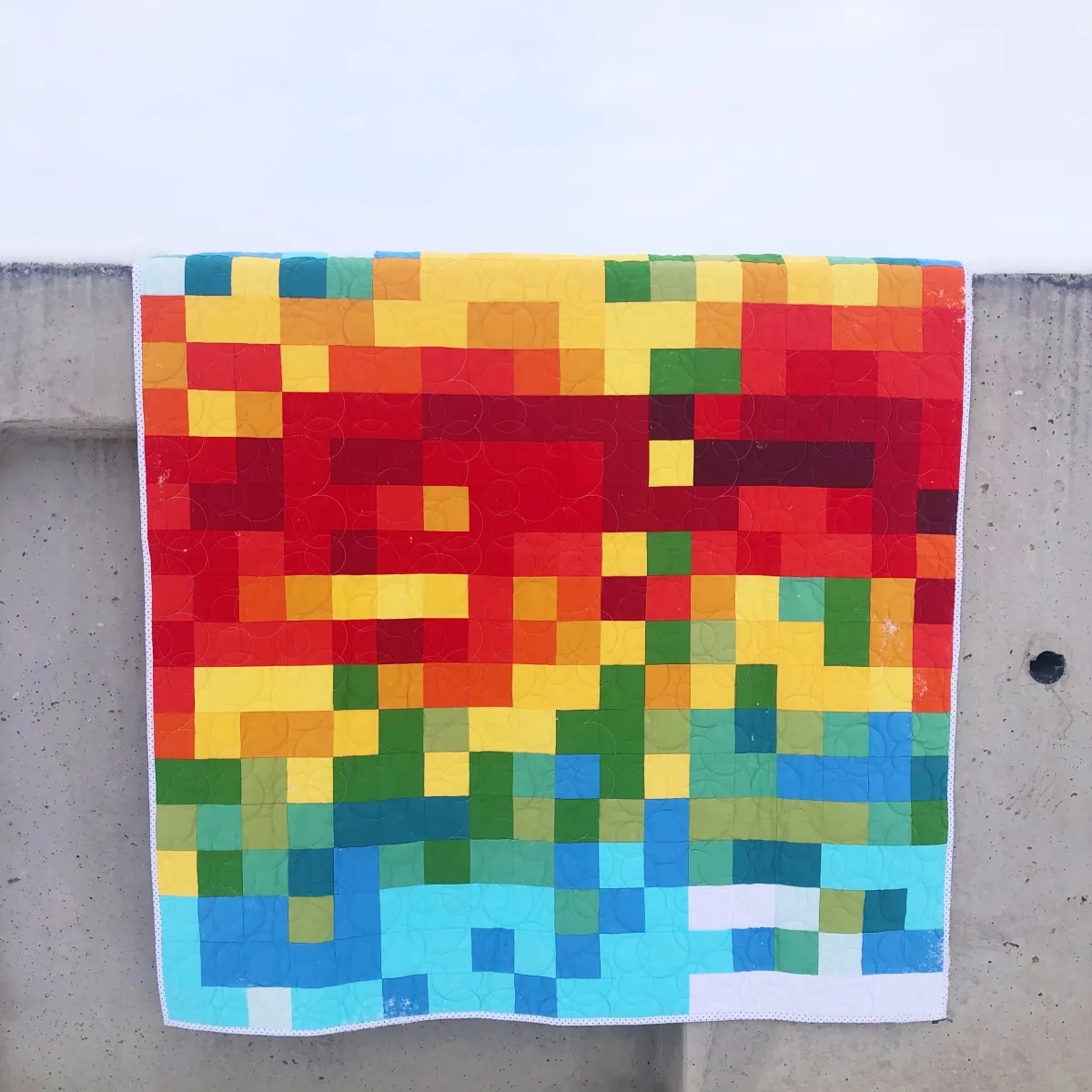


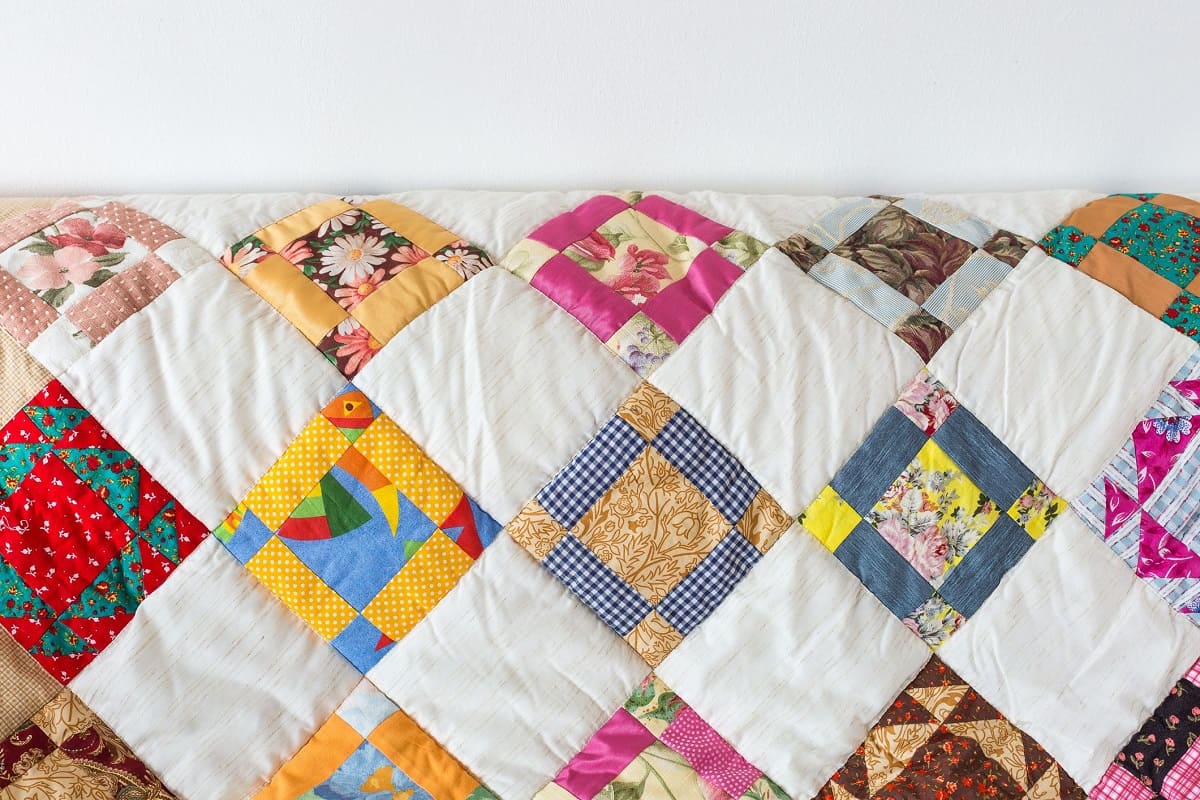
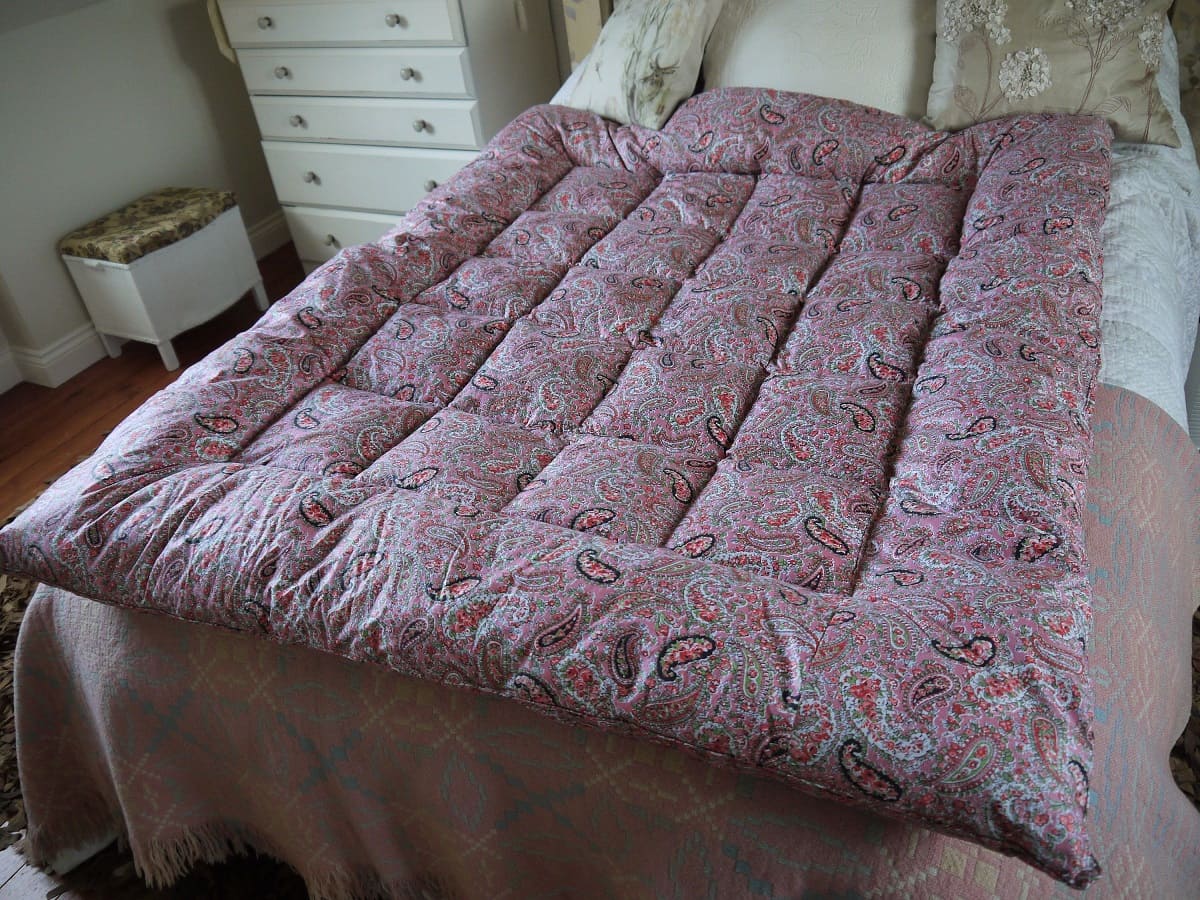
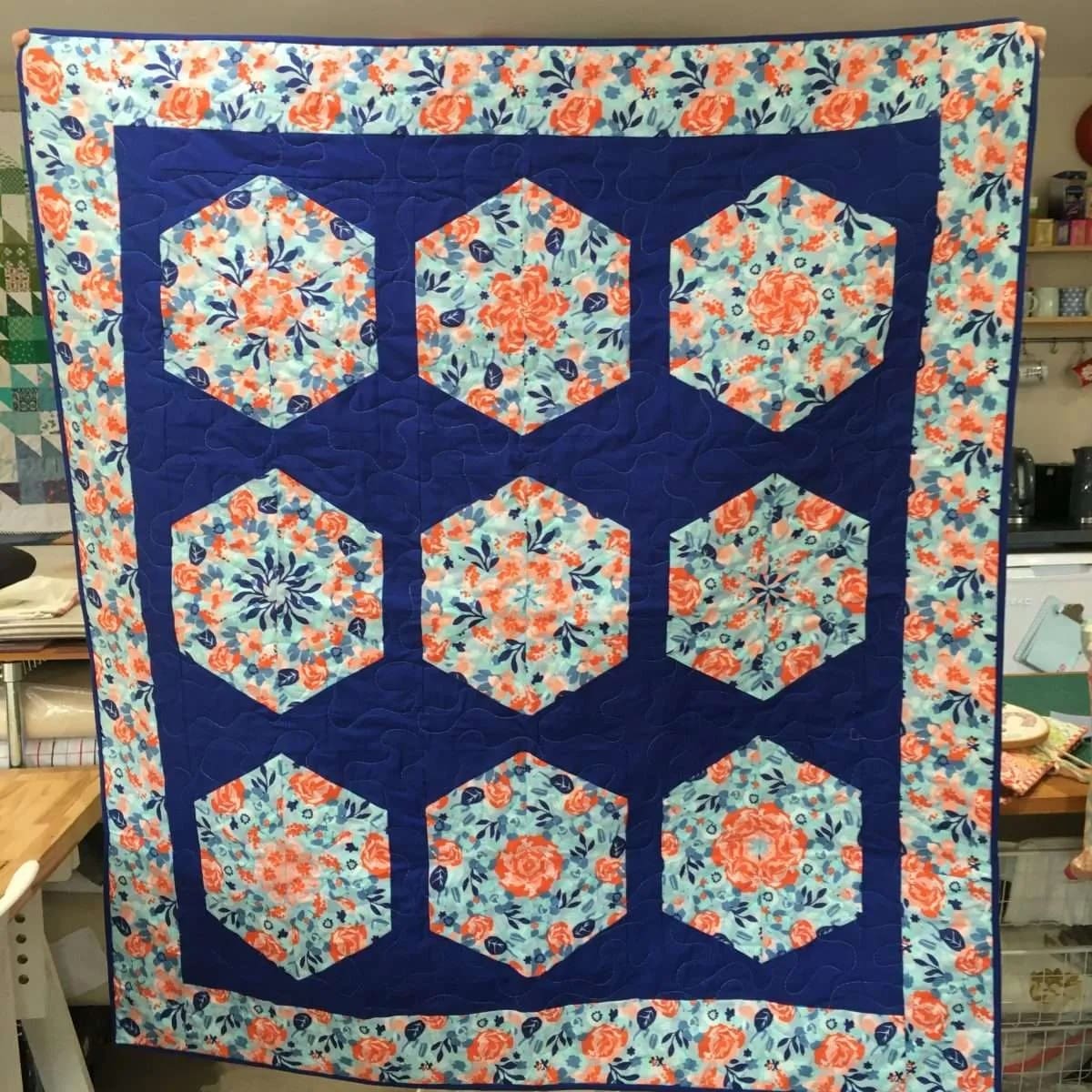
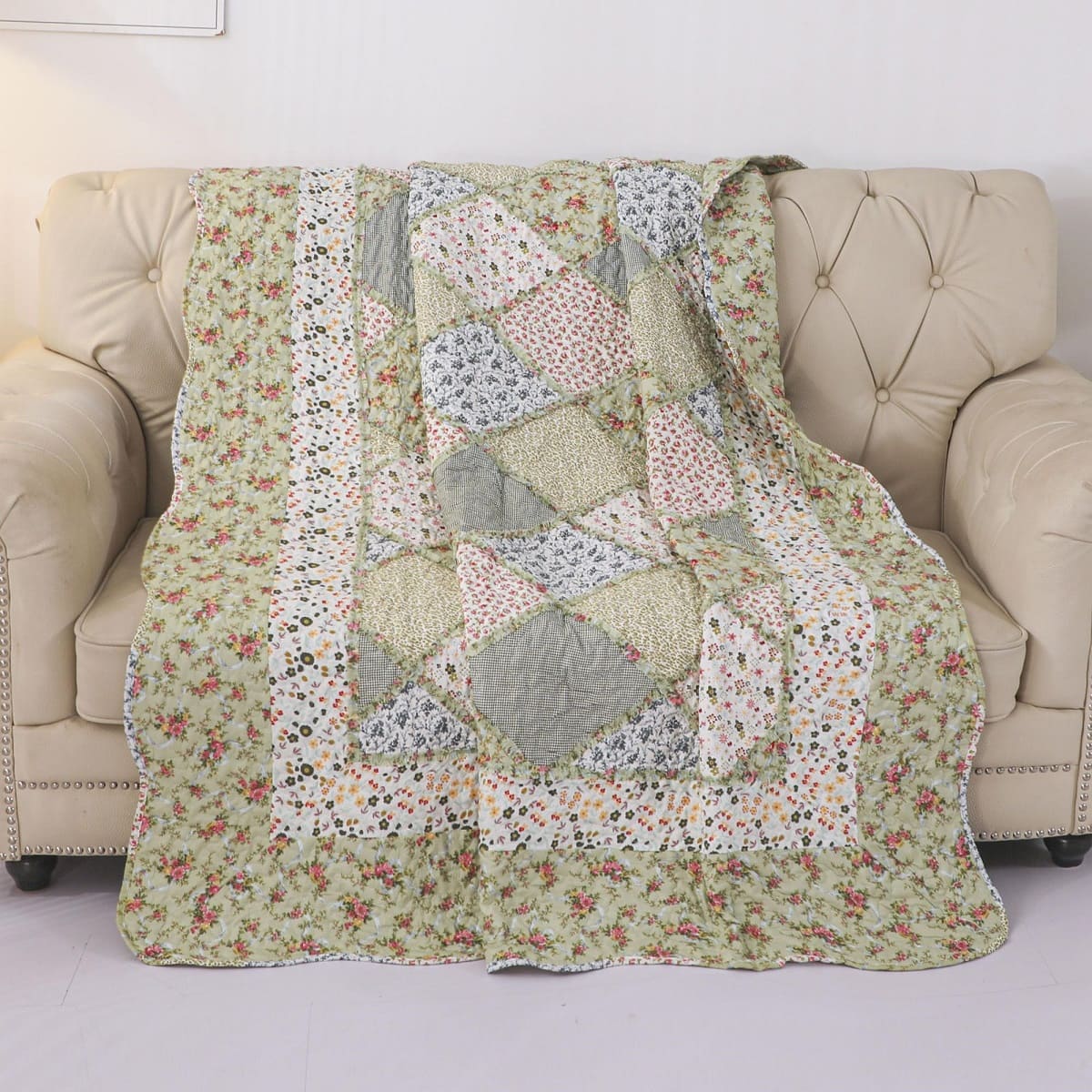
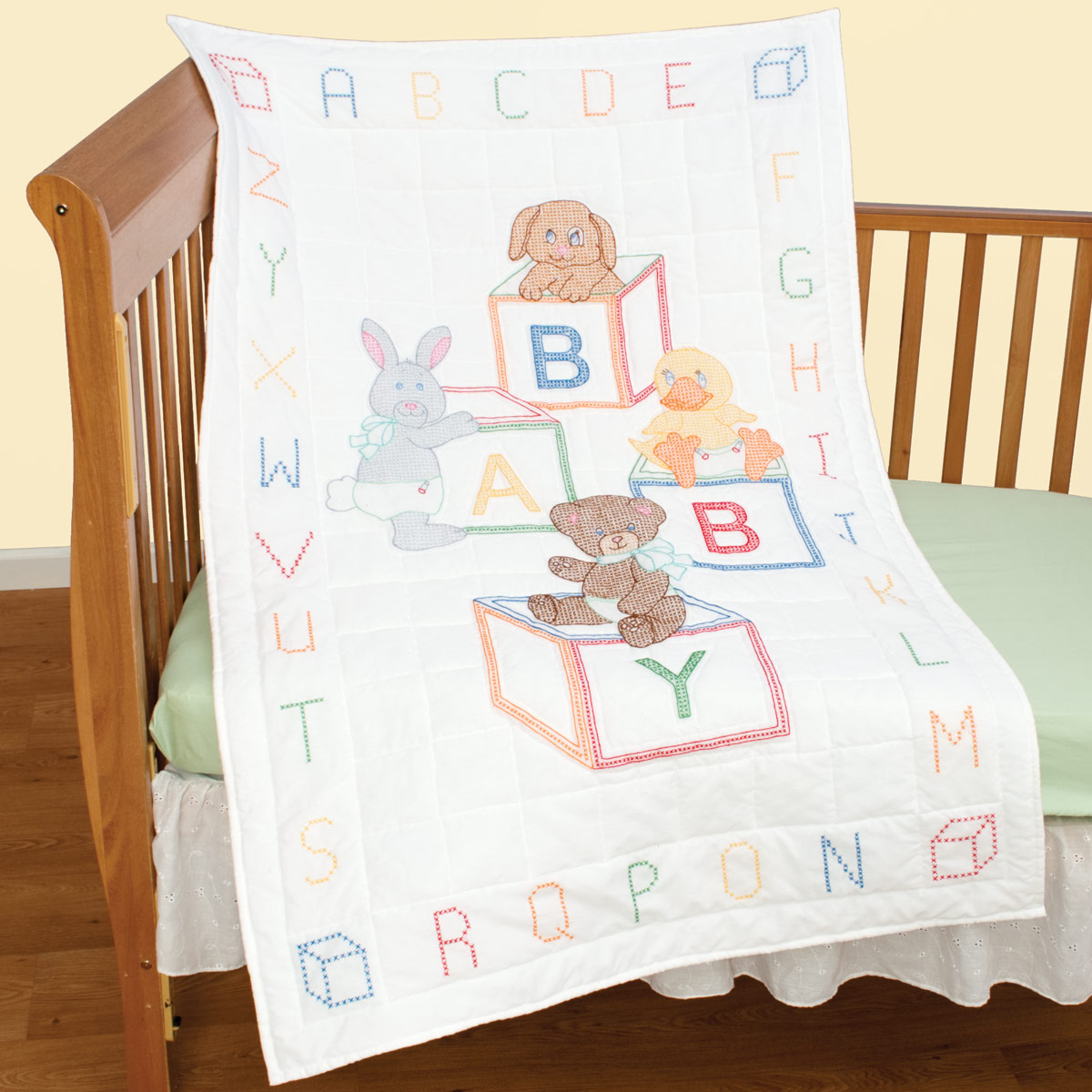
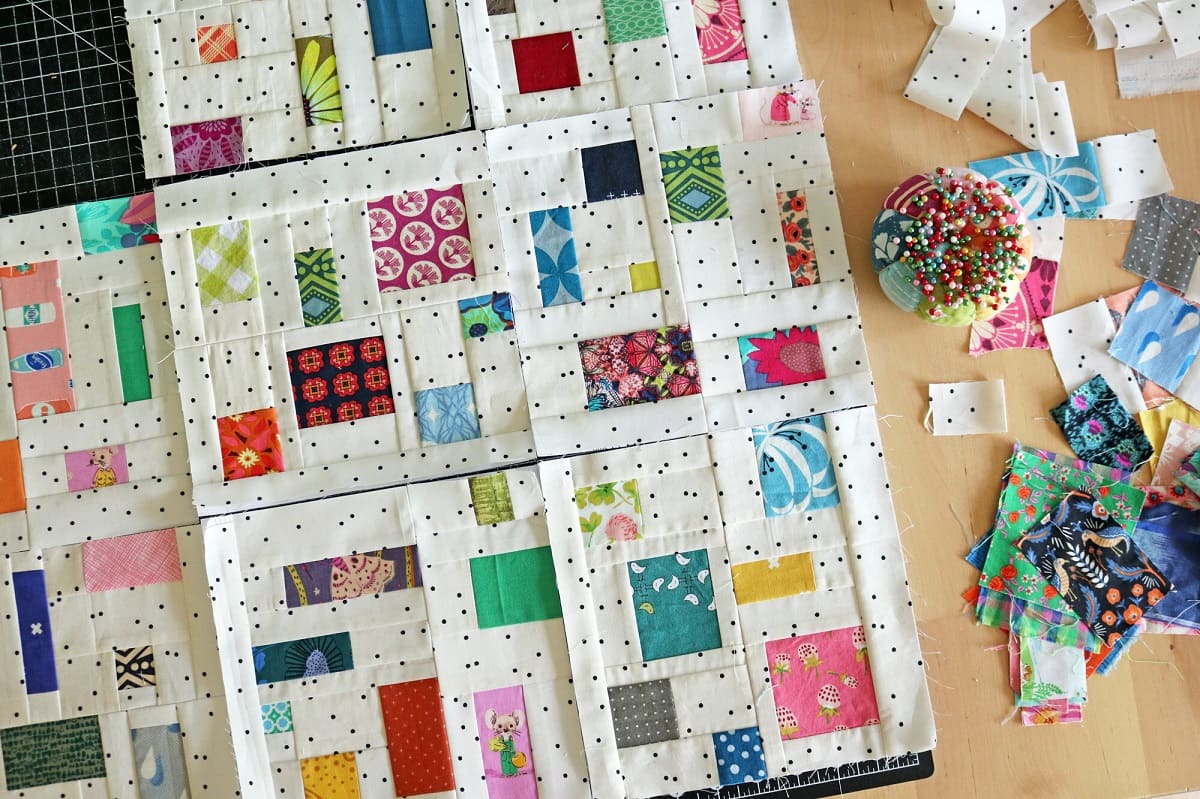

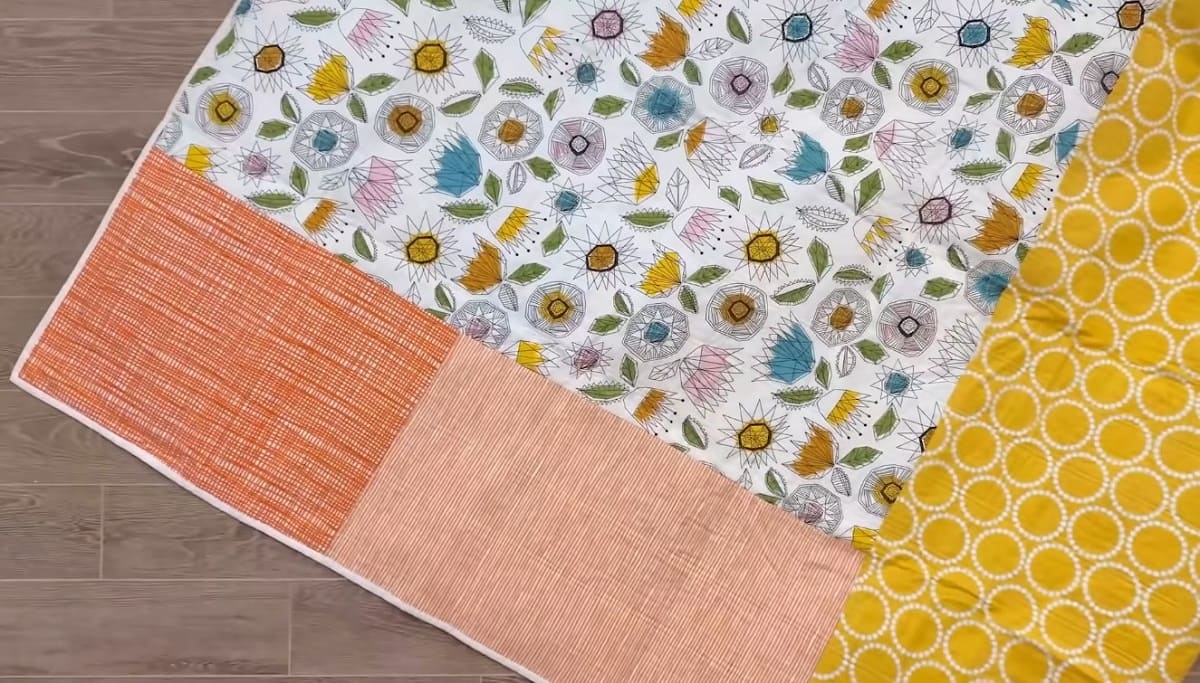
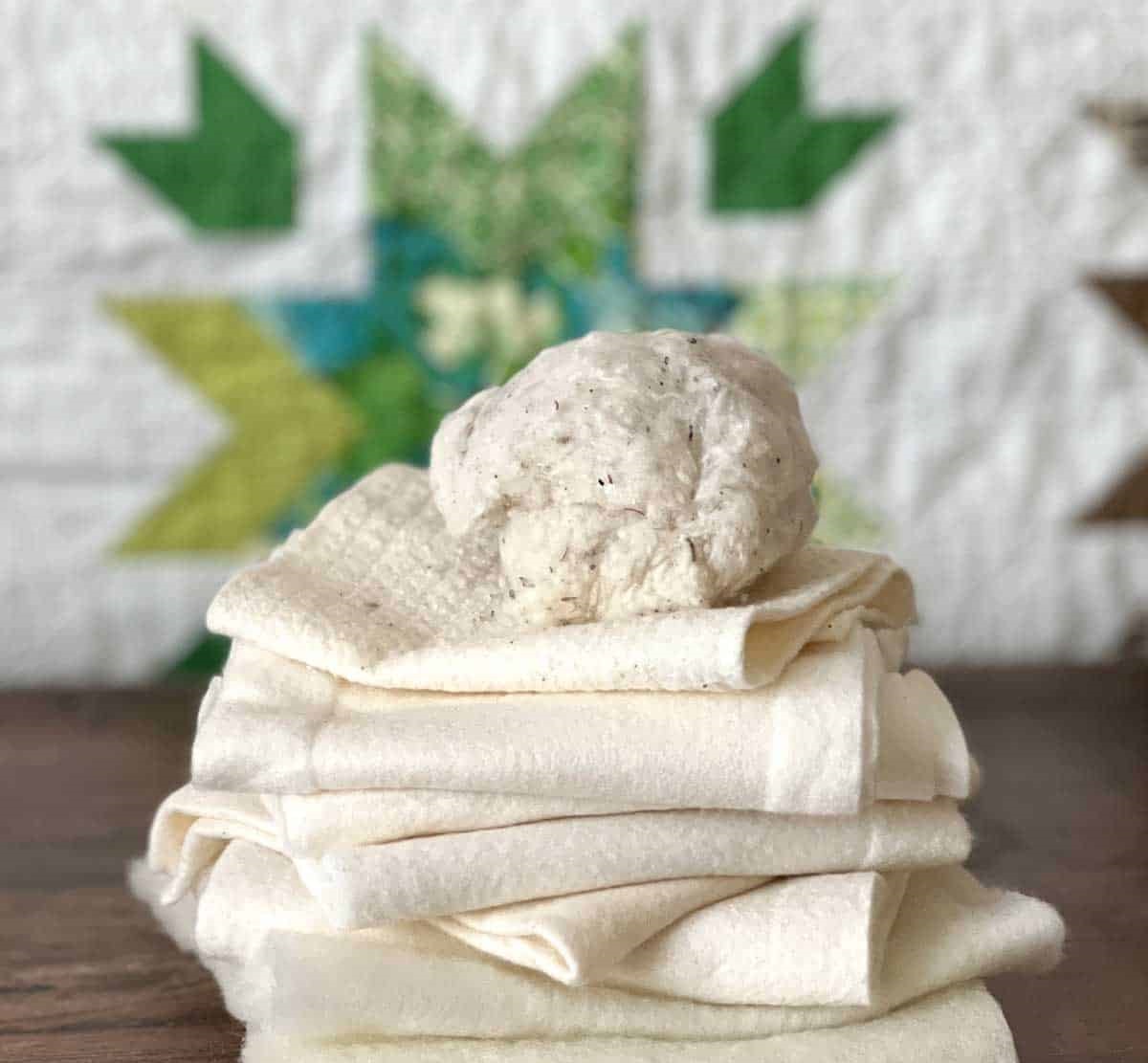

0 thoughts on “What Is The Oldest Known Quilt”